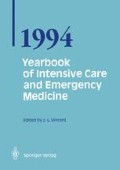Abstract
Palpitations, the uncomfortable awareness of a beating heart, are a frequent phenomenon which can occur under normal or abnormal circumstances. The heart beat can be felt in situations such as exercise, emotions, stress, or after ingesting, inhaling or receiving substances or medications which increase the adrenergic tone or diminish vagal activity (coffee, nicotine, adrenergic or anticholinergic drugs) [1]. These are “normal” palpitations. There are also “abnormal” palpitations. The heart beat becomes fast, or strong and slow, or feels like a missed or extra heart beat without any apparent cause. “Abnormal” palpitations may point to a cardiac arrhythmia, but that is not always the case. Cardiac arrhythmias can cause other symptoms (syncope, shock, fair, chest pain) or sudden death and no palpitations at all. We will discuss here the approach to the patient who seeks medical attention because of a history of palpitations.
Access this chapter
Tax calculation will be finalised at checkout
Purchases are for personal use only
Preview
Unable to display preview. Download preview PDF.
References
Malliani A, Schwartz PJ, Zanchetti A (1980) Neural mechanisms in life-threatening arrhythmias. Am Heart J 100: 705–715
Scherf D, Boyd LJ (1942) Electrocardiografia clinica. El Ateneo, Buenos Aires pp 278–290
Gürsoy S, Steurer G, Brugada P, et al (1992) The hemodynamic mechanism of neck palpitations. New Engl J Med 327: 772–774
Frank R, Fontaine G, Vedel J, et al (1978) Electrocardiologie de quatre cas de dysplasie ventriculaire droite arythmogène. Arch Mal Coeur 71: 963–972
Scherf D, Boyd LJ (1942) Electrocardiografia clinica. El Ateneo, Buenos Aires pp 290–307
Levy MN (1971) Sympathetic — parasympathetic interactions in the heart. Circ Res 29: 437–445
Brudaga P, Talajic M, Smeets J, et al (1989) Risk stratification of patients with ventricular tachycardia or ventricular fibrillation after myocardial infarction: The value of the clinical history. Eur Heart J 10: 747–752
Trappe HJ, Brugada P, Talajic M, et al (1988) Prognosis of patients with ventricular tachycardia or ventricular fibrillation. Role of the underlying etiology. J Am Coll Cardiol 12: 166–174
Lemery R, Brugada P, Della Bella P, et al (1989) Non-ischemic ventricular tachycardia: Clinical course and long-term follow-up in patients without over heart disease. Circulation 79: 990–999
Torner P, Brugada P, Smeets J, et al (1991) Ventricular fibrillation in the Wolff-ParkinsonWhite syndrome. Eur Heart J 12: 144–150
Calkins H, Langberg J, Souza J, et al (1992) Radiofrequency ablation of accessory atrio-ventricular connections in 250 patients. Circulation 85: 1337–1346
Marriot HJL, Sandler IA (1966) Criteria, old and new, for differentiating between ectopic ventricular beats and aberrant ventricular conduction in the presence of atrial fibrillation. Prog Cardiovasc Dis 9: 18–28
Brugada P, Brugada J, Mont L, Smeets J, Andries EW (1991) A new approach to the differential diagnosis of a regular tachycardia with a wide QRS complex. Circulation 83: 1649–1659
Farre J, Wellens HJJ (1981) The value of the electrocardiogram in diagnosing site of origin and mechanism of supraventricular tachycardia. In: Wellens HJJ and Kulbertus HE (eds): What’s new in electrocardiography. Martinus Nijhoff Publishers, London pp 131–171
Wellens HJJ, Bär FWHM, Lie KI (1978) The value of the electrocardiogram in the differential diagnosis of a tachycardia with a widened QRS complex. Am J Med 64: 27–33
Bär F, Brugada P, Dassen WRM, Wellens HJJ (1984) Differential diagnosis of tachycardia with narrow QRS complex (0.12 sec). Am J Cardiol 54: 555–560
Brugada P, Bär FWHM, Vanagt EJ, Friedman PL, Wellens HJJ (1981) Observations in patients showing A-V junctional echoes with a P-R shorter than R-P interval. Distinction between intraodal reentry or reentry using an accessory pathway with a long conduction time. Am J Cardiol 48: 611–622
Brugada P, Farré J, Green M (1984) Observations in patients with supraventricular tachycardia having a P-R interval shorter than the R-P interval: Differentiation between atrial tachycardia and reciprocating atrioventricular tachycardia using an accessory pathway with long conduction times. Am Heart J 107: 556–570
Fontaine G, Guiraudon G, Frank R, Coutte R, Dragodanne C (1976) Epicardial mapping and surgical treatment in six cases of resistant ventricular tachycardia not related to coronary artery disease. In: Wellens HJJ, Lie KI, Jansen MJ (eds) The conductions system of the heart. HE Stenfert, Kroese BV, Leiden, pp 545–566
Brugada P, Brugada J (1992) Right bundle branch block, persistent ST segment elevation and sudden cardiac death: A distinct clinical and electrocardiographic syndrome. J Am Coll Cardiol 20: 1391–1396
Akhtar M, Shenasa M, Tchoun PJ, Jazayeri M (1987) Role of electrophysiologic studies in supraventricular tachycardia. In: Brugada P, Wellens HJJ (eds) Cardiac Arrhythmias: Where to go from here? Futura Publishing Co. Mount Kisco pp 233–242
Editor information
Editors and Affiliations
Rights and permissions
Copyright information
© 1994 Springer-Verlag Berlin Heidelberg
About this paper
Cite this paper
d’Avila, A., Andries, E., Brugada, P. (1994). The Investigation of the Patient with Palpitations. In: Vincent, JL. (eds) Yearbook of Intensive Care and Emergency Medicine 1994. Yearbook of Intensive Care and Emergency Medicine 1994, vol 1994. Springer, Berlin, Heidelberg. https://doi.org/10.1007/978-3-642-85068-4_27
Download citation
DOI: https://doi.org/10.1007/978-3-642-85068-4_27
Publisher Name: Springer, Berlin, Heidelberg
Print ISBN: 978-3-540-57613-6
Online ISBN: 978-3-642-85068-4
eBook Packages: Springer Book Archive

